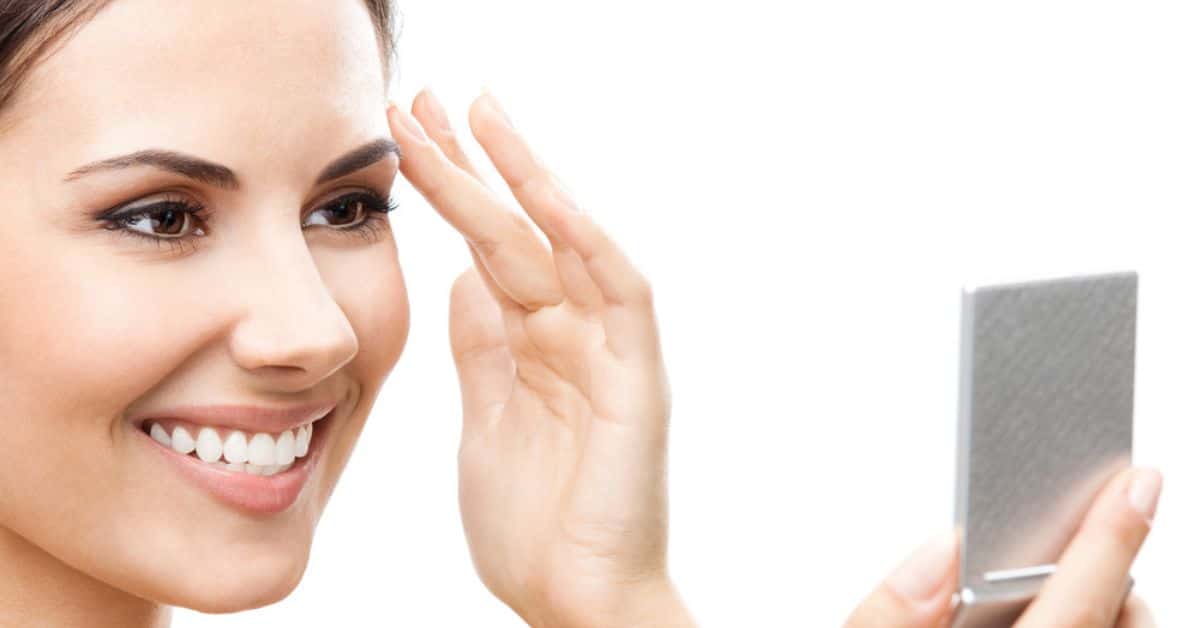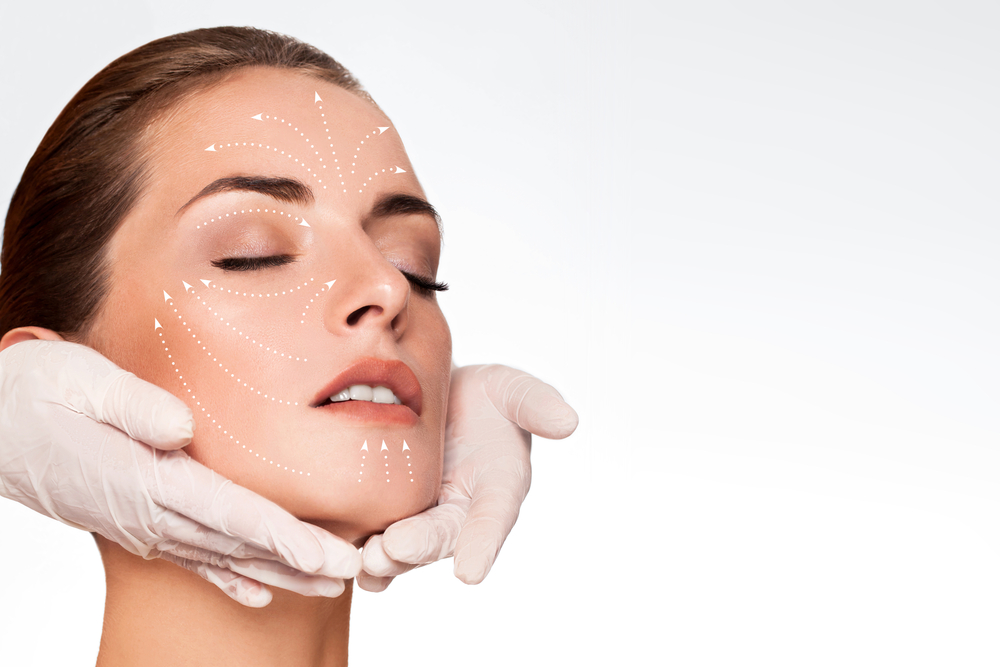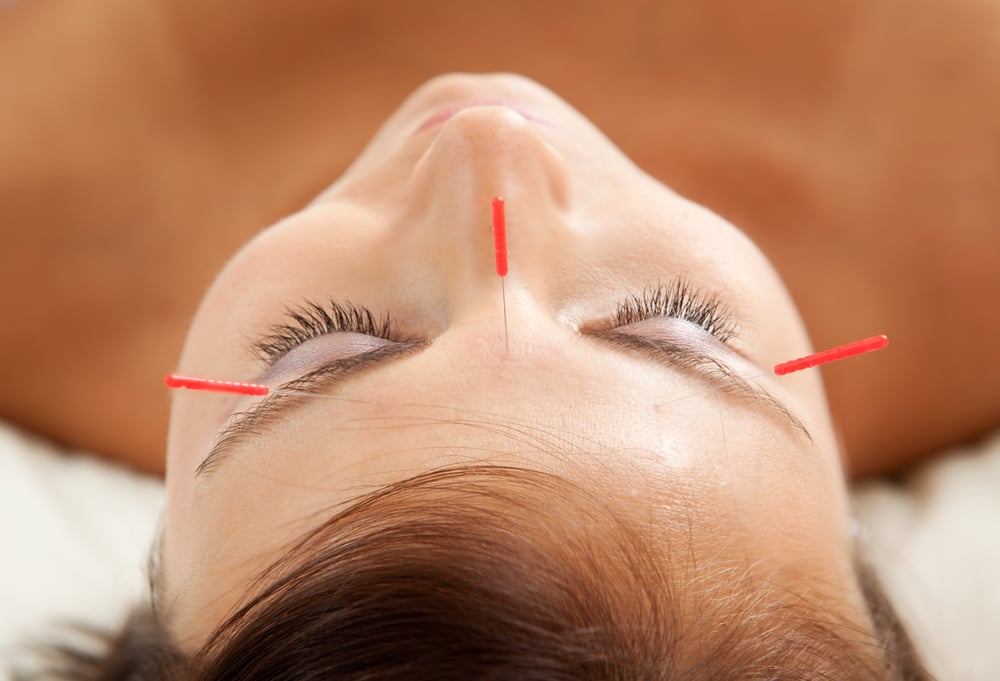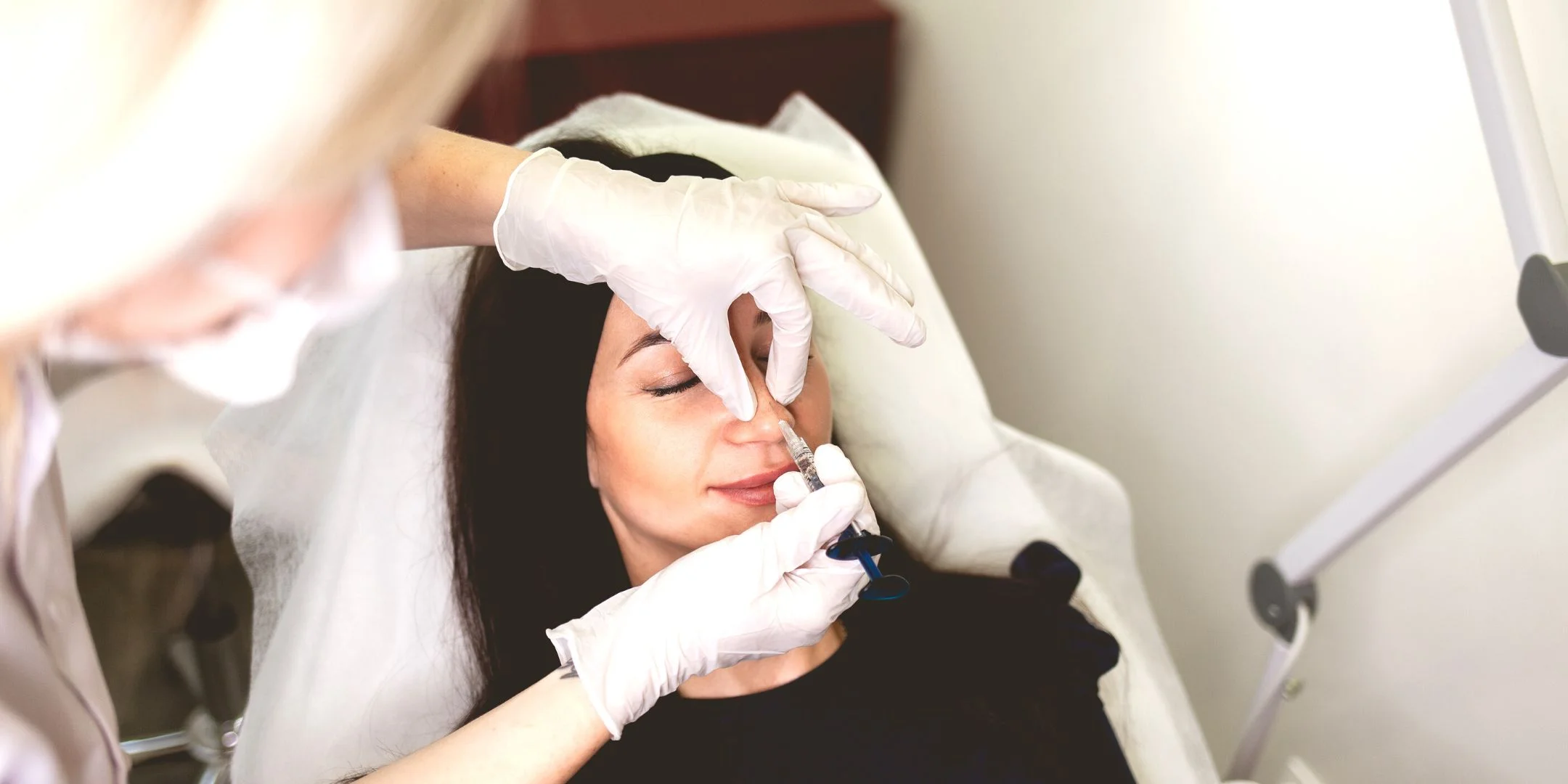With over 7 million procedures performed every year, Botulinum toxin type A injections are the most common anti-aging treatment in the United States. This guide provides detailed answers to the key questions you may have about Botox or other botulinum toxin based products.
What Is Botox?
Botox, as well as Dysport, Xeomin, and Myobloc are all medical products derived from the botulinum toxin and generally used to reduce the activity of specific muscles.
The botulinum toxin is a purified neurotoxic protein taken from the Clostridium botulinum bacteria. This same C. botulinum bacteria is responsible for foodborne botulism, commonly referred to as food poisoning. In fact, the botulinum toxin is the most potent toxin known to mankind. However, it has effectively been harnessed for medical and cosmetic benefits.
There are seven distinct botulinum toxins produced by different strains of the C. botulinum bacteria, but only types A and B are used medically. When injected into the muscles or glands of your body, botulinum toxin blocks the chemical messages from the nerves that control muscle movement or gland production. This in turn relaxes the muscles or glands, temporarily smoothing out wrinkles, relaxing overactive muscles, or reducing sweating.
The History of Botox
Botox has a convoluted and interesting history dating back to the early nineteenth century. In the 1800s, the Botulinus bacteria was discovered to cause food poisoning in humans. After a series of studies were completed, seven strains of botulinum toxin were identified and labeled A through G. Four of them, A, B, E, and F, were found to cause sickness in humans.
In 1946, Dr. Edward J. Shantz and his colleagues were able to purify botulinum toxin type A (BTX-A) into a crystal form. Shortly thereafter, in 1953, physiologist Dr. Vernon Brooks found that injecting extremely small amounts into a hyperactive muscle caused a temporary relaxing effect.
In the ’60s, eye doctor Dr. Alan B. Scott began using BTX-A injections on monkeys. He demonstrated that its muscle-relaxing properties could be used to treat crossed eyes (strabismus). It wasn’t long before BTX-A became the most used toxin in research labs around the world.
In 1978, Dr. Scott was given permission by the FDA to start testing the botulinum toxin on humans, and soon after, results began to be published. He demonstrated in 1981 that small doses of botulinum toxin “appeared to be a safe and useful therapy for strabismus.” Further studies showed that the drug’s usefulness extended beyond the eyes, providing patients with temporary relief from spasms in the face, neck, shoulders, and even vocal cords.
In 1988, major drug manufacturer Allergan bought the rights to distribute Dr. Scott’s BTX-A, or Occulinum, as he had named it. One year later, the FDA approved it for treating both crossed eyes (strabismus) and eyelid muscle spasms (blepharospasm). Not long thereafter, Allergan purchased Dr. Scott’s company, and changed the drug’s name to the more memorable and instantly recognizable “Botox.”
Research continued into the ’90s, and the botulinum toxin was successfully used to temporarily treat writer’s cramp, bladder spasm, excessive sweating, and even cerebral palsy in children. The most startling discovery however, which would go on to become the most popular use for Botox, was made entirely by accident.
Canadian eye doctor Dr. Jean Carruthers happened to notice that the frown lines of her blepharospasm patients were beginning to fade. In 1992, along with her dermatologist husband, she published a study revealing the safety and usefulness of using BTX-A to temporarily treat brow wrinkles. By ’97, dermatologists across the country had taken notice of this “off-label” use, and demand for the drug spiked so quickly the country actually ran out.
With the dawning of a new millennium, yet even more uses for botulinum toxins, also known as neuromodulators, were discovered and approved by the FDA. Its various forms have since been approved for the temporary treatment of cervical dystonia, or the painful, involuntary contraction of the neck muscles, as well as to treat frown lines between the eyebrows.
It has also been approved to treat severe underarm sweating, and spasms of the elbow, wrist, and fingers in adults who have experienced stroke, traumatic brain injury, or multiple sclerosis. It can also treat chronic migraines, urinary incontinence, and relieve upper limb spasticity (ULS). Lastly, several forms of the toxin have been approved for the treatment of crow’s feet.
With this wide range of safe and efficient medical benefits, it’s not hard to understand why Botox, and other similar treatments, have become the number one non-surgical cosmetic procedure in the United States.
What Is Botox Used For?
Most people are only aware of the cosmetic abilities of Botox and other botulinum toxins. However, as the mechanics of Botulinum toxins have become better understood, the FDA has approved them for diverse therapeutic purposes as well.
Cosmetic Uses
- Hyperkinetic facial lines: The primary use for cosmetic BTX-A in facial surgery is to treat frown or “glabellar” lines, crow’s feet, and platysma banding, commonly called “turkey neck.”
- Eyebrow lifting: A small injection of botulinum toxin into the brow muscle can result in improved brow height thanks to the toxin’s paralyzing effect. This is often performed as an alternative to a surgical brow lift.
- Hyperactivity in the frontalis muscles, which control the eyebrows and forehead.
- Dimpling of the chin because of overactive muscles.
- Raising drooping corners of the mouth.
- Fine lines around the lips.
- Fine wrinkles under the eyes.
- Jawline softening by targeting the masseter muscle.
Therapeutic Uses
- Migraine headaches: This use was also discovered by accident when patients being treated for frown lines reported fewer headaches. Though it’s not entirely known how it works, BTX-A has been shown to be a safe and effective way of preventing migraines.
- Dystonia: This describes any abnormal muscle spasms in the eyelids, face, jaw, neck, vocal chords, forearm, hand and arm muscles.
- Hemifacial spasms: These are involuntary, repeating twitches of the eyelids and other facial muscles on only one side of the face.
- Strabismus, or crossed eyes.
- Hyperactivity of the exocrine glands: This includes salivary glands, sweat glands, mammary glands, and some glands in the digestion system, such as the palms, hands, soles of the feet, armpits and face.
- Relative sialorrhoea: BTX-A has been used to control drooling in conditions like Parkinson’s Disease, motor neuron disease, and bulbar/pseudobulbar palsy without causing dry mouth.
- Frey’s syndrome: This rare neurological disorder causes redness and sweating on the cheeks when the afflicted person simply sees, talks about, or even thinks about certain foods that cause a lot of salivation.
- Crocodile tears syndrome: This rare syndrome occurs when salivary glands are damaged and mistakenly regrow into a tear gland. This results in the patient tearing up as their mouth waters to eat.
Some “off-label” therapeutic uses that have not yet been approved by the FDA include:
- Prostate Hyperplasia: BTX-A has been shown to relieve bladder outlet obstructions caused by benign prostatic hyperplasia (BPH). Hyperplasia refers to the enlargement of an organ, in this case the prostate.
- Smooth Muscle Disorders: Direct injection of botulinum toxins has been shown to be a safe, simple, and effective way to treat disorders of the gastrointestinal muscle, and other smooth muscles in the body.
- Overactive Bladder Syndrome, with or without incontinence.
- Spastic disorders that are associated with an injury or disease of the central nervous system, including trauma, stroke, multiple sclerosis, and cerebral palsy.
- Anal fissure
- Diabetic neuropathy
- Wound healing
- Excessive salivation
- Parkinson’s Disease
- Depression – a study found that people suffering from major depression experienced fewer symptoms 6 weeks after their Botox injection.
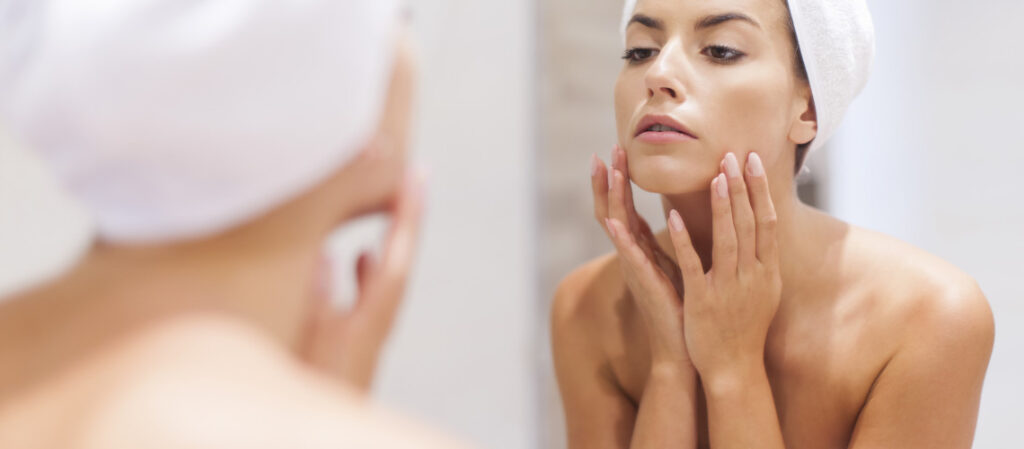
RELATED: 10 Common Botox Myths Exposed
Is There a Difference Between Botox, Dysport, and Other Brands?
Botulinum toxin based injectables are sold under a number of brand names, the most commonly-known products in the United States being Botox, Dysport, Xeomin, and Myobloc.
Botox
Botulinum toxin type A, or Botox as it would become widely known, was the first botulinum toxin treatment to be approved by the FDA. It became commercially available in 1989. It would take a few years, but Botox would go on to become one of the most popular cosmetic procedures of all time.
As the longest running botulinum toxin injectable available, Botox enjoys a lot of brand recognition and customer loyalty. In fact, even the name “Botox” has become a household word. With nearly three decades of positive results, a high safety rating, and positive patient feedback, Botox is the number one most trusted brand in the world of botulinum toxin injectables.
Many injectors charge a flat rate for each injection of Botox, while other practices will break it down into costs per “units” used in each treatment. Flat rates usually range between $300 and $1,000, and per unit prices are usually $10 to $15 per unit.
Doctors usually pay about $400 per vial of Botox, each containing about 100 units, or enough for about 4 or 5 treatments. However, every vial must be used within a few hours of being opened, otherwise the medication goes bad and must be discarded. This can impact on the cost.
Note that the final cost of any botulinum toxin injections will depend on the area treated, the geographical location where you receive treatment, and the number of injections needed. Also keep in mind that the quality of the surgical practice where your treatment is carried out and the professional qualification of your injector can impact on the price. Any practice offering an exceptionally low price for Botox may be a hint of poor treatment procedures.
Lastly, remember that Botox for aesthetic purposes is not usually covered by insurance.
Dysport
Another botulinum toxin type A injectable that is available is Dysport (abobotulinumtoxinA), which gained FDA approval in April 2009. Although its approval for use in the United States came years after Botox, Dysport has been widely available in the U.K. since 1991.
The average cost for Dysport injections is between $300 and $400. This may seem less expensive than Botox, but it is important to keep in mind that Dysport has less botulinum toxin in each injection. Depending on what your specific treatment entails, you may therefore need more treatments to reach your desired goals.
Xeomin
Another botulinum toxins type A injectable available at present is Xeomin (incobotulinumtoxinA). Like Dysport, this product has been available overseas for some time now, hitting the European market in 2005.
Introduced into the U.S. in 2010, Xeomin achieved FDA approval in 2011. Known as a “naked injectable,” Xeomin differs in that it doesn’t contain any additives, unlike its older competitors.
However, the most significant difference between Xeomin and other injectables like Botox and Dysport is that Xeomin contains only one ingredient: botulinum toxin type A. This sets it apart in a number of ways:
- Because Xeomin doesn’t contain any additives, your body is much less likely to become resistant to it, unlike Botox or Dysport.
- Xeomin is the only botulinum toxin that doesn’t need to be refrigerated, making it much easier for doctors to keep on hand.
- With no bonding proteins, the chances of an allergic reaction are greatly reduced.
Often measured in units like Botox, Xeomin usually runs about $10 to $12 per unit. The cost of each treatment can be as high as $400, though like all other injectables, the final price depends on your injector’s experience and the area to be treated.
Myobloc
The only commercially available version of botulinum toxin type B, Myobloc (rimabotulinumtoxinB) became available on the U.S. market in 2000.
Botulinum toxin type A and type B are very similar, but type B Myobloc has a few advantages over type A toxins:
- Myobloc is able to relieve pain for patients who have become resistant to BTX-A medications.
- Myobloc has a slightly faster onset time than BTX-A injectables.
- Though not approved for cosmetic wrinkle treatments, Myobloc has been found to spread out from the injection site similar to Dysport. This means a larger area can benefit from treatment.
Myobloc is available in an injectable solution that has 5,000 units per milliliter, and is most often available in 0.5 milliliter doses. The average treatment uses between 2,500 and 5,000 units, and usually runs in the $300 to $600 range.
Dysport vs Botox — Which Is Best?
Dysport holds some advantages over Botox. Since it is made with a smaller protein “load” than Botox, your body will not try as hard to attack it, so results should last a little longer. That said, this is still being debated and studied.
Also thanks to this smaller protein load, Dysport’s results appear slightly faster than Botox: 2-5 days, rather than 4-7. This makes it more effective if you have a date or special event on the horizon.
Once injected, Dysport “spreads out” somewhat more than Botox. This can be both a good thing and a bad thing. It’s very useful for treating larger areas, like the forehead or armpits. It means fewer injections, along with less swelling, bruising, and general discomfort. On the other hand, if administered by an inexperienced doctor, Dysport can spread into unwanted areas, causing negative side effects like blurry vision or drooping eyebrows. It also means that Dysport might not work as well for small areas, or thicker muscles, like between your eyebrows or around your mouth.
Dysport is also more diluted than Botox, which means you might require more treatments to acquire the same result. However, this means that Dysport is often cheaper per unit, which can potentially translate to a less expensive total cost, depending on your treatment.
In most cases, the deciding factor between Botox and Dysport is a matter of preference for either you, or the doctor administering your injection. There are several differences between the two, but mostly they’re remarkably similar.
Botulinum Toxin Candidates
Botox and other botulinum toxin injectables have been proven safe for a wide variety of candidates. While there are many medical uses for botulinum toxins, the reduction of fine lines on the forehead and around the eyes and mouth are by far the most popular procedures.
Most of these procedures involve several small injections over the course of a 10-minute session. This means an extremely large number of people looking into this treatment will find they are excellent candidates.
Those who may benefit from Botox include those who:
- Are between 18 and 65 years of age.
- Are in good general health.
- Have realistic expectations of what Botox can achieve.
- Would like to smooth out their wrinkles.
- Have not experienced an allergic reaction to another botulinum toxin based injectable.
- Have drooping corners of their mouth that they wish to see corrected.
- Would like to soften their jaw.
Injectables such as Botox, Dysport, Xeomin, and Myobloc have also been used to treat a number of medical conditions as well. These include excessive sweating (hyperhidrosis), migraines, muscles spasms, and chronic pain. Good candidates for these uses of Botox should be evaluated on a case-by-case basis.
10 Tips to Prepare You for Your Treatment
- Ensure you are receiving your treatments from a licensed medical professional. Be careful and do your research; although this is a minor procedure, only an experienced injector can provide the best results.
- Avoid aspirin, ibuprofen, and vitamin E prior to treatment. Some people have some minor bruising around the injection site after a procedure. Medications and supplements like those listed above thin the blood, and can increase the risk of bruising.
- Some mild discomfort is very common, so you might wish to take an over-the-counter pain medication before your injections. As Tylenol does not thin the blood, it’s the perfect pain management tool.
- Tell your injector if you are taking any blood thinning medications. It’s also a good idea to inform your injector of any medications you take.
- Make sure you’re clear about your goals. It’s essential that you are open and honest with your injector about your goals so they know exactly what you want. A simple conversation can avoid the “frozen face” look.
- Don’t wear makeup to your appointment. The area where the injection will be made needs to be completely clean to avoid infection.
- Depending on where your injections are made, there might be some bruising for a few days. A good foundation will help keep it hidden until everything has healed.
- Skip the gym. A slow, calm heart rate is the best for your injections, so avoiding vigorous exercise for at least a day or two before and after your procedure is highly recommended.
- Keep your schedule clear. It’s a good idea to keep the time after your injections for yourself; no meetings or important events. Take a relaxing day so you can heal properly.
- Abstain from alcohol. For at least a few days before your injections avoid drinking any alcohol. Alcohol can lead to extra bruising afterwards.
What to Expect After Botox: Your Recovery Timeline
There is virtually no recovery time associated with Botox treatments. In fact, it’s often referred to as a “lunchtime procedure” because patients are usually able to immediately return to their daily activities, including work. There are no incisions, sutures, or bandages of any kind. Generally, Botox side effects are extremely mild and fade within minutes to days.
Immediately After Treatment
As soon as your treatment is complete, you might notice a small amount of redness and swelling at the injection site. This is normal, and typically resolves itself within a few minutes. Most patients do not feel any pain or side effects during or after their treatment, though a very small group of people have reported a mild headache in the following hours. This is always easily taken care of with over-the-counter pain relief.
Your injector will provide post-treatment information and instructions specifically tailored to your treatment. This will outline all the details and any post-care advice from your injector. Make sure to follow them closely for the best results.
Once you return home, it’s best if you try not to lie down for a minimum of four hours, and avoid rubbing the treated area for at least 12 hours. Either of these actions may cause the injected solution to move outside the targeted area.
1 Day After Treatment
The majority of people who undergo an injection treatment will not have any outward signs of the procedure at all. That said, mild bruising is always a possibility, and can usually be easily covered with a concealer. Some individuals experience a mild headache, which can be easily treated with mild pain medication.
It takes some time (3-7 days) for the Botox to take effect, so do not be concerned if you don’t see an improvement one day after treatment.
1 Week After Treatment
At the seven day mark you should be able to see the results of your treatment. The area will look smoother, and appear more refreshed. After your first treatment it’s not uncommon to feel a mildly tight sensation in the skin and muscles, or even a feeling of heaviness. These fade over the course of a week or two. If it’s your first treatment, your clinic may follow-up with a call to check in on you, see how you’re feeling, and answer any recovery questions you might have.
If you don’t see anything at this point, you may need to wait one more week. Some patients find that their results appear more slowly, taking up to 2 weeks to appear. If you don’t see anything by the second week, make sure to return to your injector to discuss your results. You may need a touch-up.
1 Month After Treatment
After a month your results should be clearly visible, and still very noticeable. Some people may start to see a small amount of movement return to the treated area, but it varies for everyone.
4 Months After Treatment
After four months you will slowly start to see movement return to the treated area. Many injectors will recommend you book another assessment, and possible follow up treatments at this time.
10 Botox Recovery Tips
- Continue to stay away from blood thinning medication. You should continue to avoid any medications with blood thinning properties for at least the first 24 hours after your injections. This will help minimize any bruising.
- Avoid strenuous activities. There really isn’t much of a “downtime” with injectables, but it’s still a good idea to limit your activity levels for at least the first day. Avoiding high-energy workouts can help your body recover. It also gives the product time to “settle” so your results don’t move or appear uneven.
- It can take 2 to 7 days for your results to become visible. During that period, avoid rubbing the injection site.
- Avoid heat. For the first 24 hours after your injections you should avoid hot showers or baths. Heat causes the blood vessels in your skin to open up, allowing more blood through, which increases the chances of bruising.
- Ice the injection site. Using a simple ice pack on your injection sites will help with any minor swelling that might occur, as well as reduce the risk of bruising. The sooner you do this after the procedure, the more the risks are reduced. Use ice packs for short periods of 20 seconds or less: any longer and you risk “burning” your skin with the extreme cold. Be sure to discuss this with your injector; some injectors prefer that their patients avoid using ice.
- Sleep on your back. This will reduce the risk of the injected product moving during the night, causing unwanted side effects.
- Exercise the treated muscles for an hour or two after the procedure. For example, practice frowning, raising your eyebrows, or squinting, depending on what your treatment targeted. This helps the injection work its way into the muscle.
- Stay upright for four hours after your injection. Don’t “rest your head” or lie down, as it may cause the Botox to move out of the treated area. A lot of patients choose to have their injections done in the morning or around lunch, so they aren’t tempted to go back to bed.
- Follow up with your doctor. The recovery associated with these kinds of injection procedures is usually very swift but it can be even easier if you stay in contact with your doctor. That way, if you notice any abnormalities or complications, or you have any questions about your recovery, your doctor is only a phone call away.
- Go for touch ups. If, in the end, you’re not completely happy with your results, or you simply need a little “touch up” to meet your goal, feel free to make another appointment.
Risks, Side Effects, and Complications
When performed by an experienced and knowledgeable injector, Botox has been proven to be extremely safe with a low risk of complications and side effects, most of which are mild and temporary.
Of course, no procedure is completely without risk, and the possible side effects of Botox include:
- Pain, swelling and/or bruising at the injection site.
- Headache or flu-like symptoms
- Drooping or cockeyed eyebrows.
- Crooked smile or drooling.
- Dry mouth.
- Eye dryness or excessive tearing.
- Neck pain.
Botox and other injectables are derived from the same substance that causes botulism, and although it’s extremely rare and unlikely, the effects of botulinum toxin can spread to other parts of your body and cause botulism-like symptoms.
Contact your injector immediately if you notice any of the following symptoms in the hours and weeks after your treatment:
- Muscle weakness all over your body.
- Vision problems.
- Trouble speaking or swallowing.
- Difficulty breathing.
- Loss of bladder control.
How Do I Get Rid of Botox Bruises?
Bruising is fairly rare. That said, any time the skin is punctured by a needle bruising is a possibility. If it does occur, any post-injection bruising can be easily hidden with your usual makeup, and should fade over the course of a few days to a week.
The especially soft tissues around the eyes mean treatments for crow’s feet seem to have the highest incidence of bruising. If this is the area you are thinking about having injections, be sure to prepare.
You can further reduce your risk of developing post-injection bruising by simply avoiding using any blood thinning medications or supplements in the 2 or 3 weeks leading up to your appointment. These includes things like aspirin, ibuprofen, vitamin E, and alcohol. If you are taking a prescription medication that acts as a blood thinner be sure to discuss it with your doctor.
If you do notice bruises or lumps after your treatment, the only thing you can do is wait and allow your body to heal. The majority of minor bruising that occurs after an injection will completely fade within two weeks, usually much sooner. That said, there are ways to help your body heal quickly, as well as ways to mask the bruising until it fades.
Firstly, make sure that your head is propped up even when you lie down. Keeping you head upright on top of a few pillows helps reduce bruising, swelling, and blood pooling in the area. Allow gravity to help move the blood away from the injection site and help the healing process.
You can also try crushed ice or cold compresses to constrict the blood vessels in your face and help prevent any bruising from spreading. Be sure not to apply ice directly to your skin as this can cause burning. Instead, use a soft cloth to help distribute the cooling effect across your skin. This is especially effective during the first few days after your injections. Before you do this, talk to your injector to make sure this is suitable for you.
Staying away from any strenuous activity is another effective way to minimize and contain bruising. Anything that elevates your blood pressure can cause bruising, or make it worse. In a worst case scenario, over exerting yourself can even cause outright bleeding. You should avoid running, weight lifting, pilates, aerobics, cycling, climbing, yoga, sex, and anything else that raises your heart rate and blood pressure. You’ll likely only need to avoid these activities for a few days.
Lastly, some people choose to try over-the-counter creams or gels that claim to help alleviate dark, swollen bruising. Be sure to discuss this with your injector beforehand. They may prefer you use a specific product, or none at all.
If post-Botox bruises don’t disappear as quickly as you would have hoped, makeup is often more than enough to hide them until they fade.
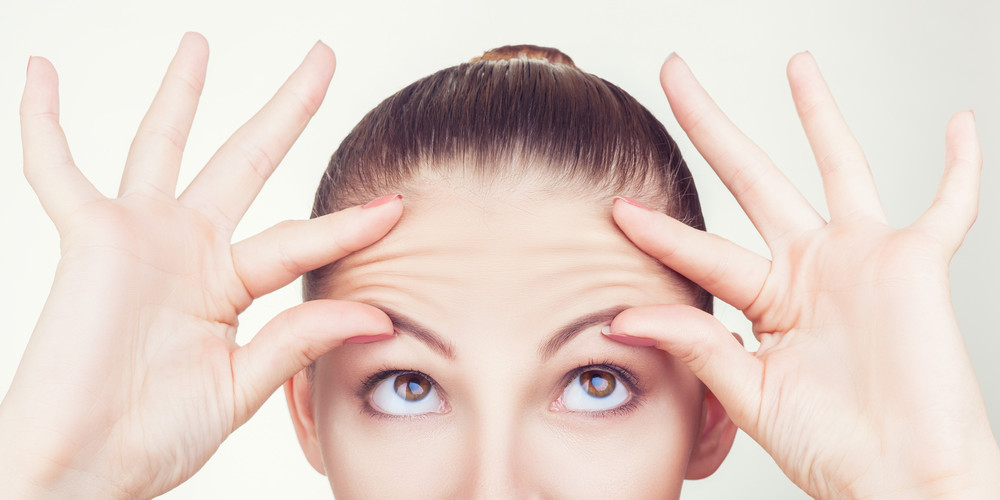
RELATED: 20 Popular Botox Treatment Questions Answered
How Long Do Results Last?
Botox is not permanent! The single most important factor to understand regarding your treatment is that results are temporary.
Generally speaking, if performed by a skilled and experienced injector, your results should last three to six months. However, results may vary. For example, first time patients might see their treatment wearing off before the three month mark. This may be because the body has metabolized the Botox faster, or because the amount administered was too conservative.
Injections around the eyes also tend to have shorter results, often wearing off before three months. However, the muscles become conditioned to the Botox with repeated use, and results should last longer.
The longevity of your results depends on three factors: dosage, application and how fast your body metabolizes the product.
If the solution is too diluted, or if you don’t get the necessary units injected, the results probably will not last very long. Similarly, if Botox is used to treat the wrong kind of wrinkles, such as static wrinkles which are not caused by muscle movements, it will not work as effectively.
If you find that your results aren’t lasting as long as they should, speak to your injector to find out why. There are a number of causes for this, including:
- The solution was too diluted.
- Not enough was injected.
- The solution was old, and therefore less effective.
- Your particular anatomy requires a different technique.
- You may be resistant to Botox.
A good injector will work with you to ensure your treatments are worth your time and money.
Latest Techniques and Scientific Studies
A perpetual high performer in the cosmetic world, Botox offers consistent, impressive and safe outcomes for patients who long for a more youthful facial appearance.
One of the most significant recent advances in Botox are improvements in syringe technology: in 2017, TSK laboratories released a new metered syringe that can accurately deliver two, one or half a unit of Botox to help ensure the art of delivery is more precise, reducing the likelihood of under or over-injection. Improvements in needle technology also mean more refined needle points for greater exactitude, with the result that Botox is even more painless than before.
Interestingly, some of the most influential advances in Botox relate to the therapeutic rather than cosmetic field. Botox has been used successfully to treat overactive bladders, excessive sweating, premature ejaculation, neck spasms and even migraines. But the most recent research has been investigating its potential to alleviate the symptoms of individuals suffering from major depression.
Phase One clinical trials have shown that 52% of 74 people with significant depressive symptoms showed an improvement in symptoms after receiving Botox. Phase Two trials are underway in 2017.
While scientists are yet not entirely certain how Botox addresses depression, one initial hypothesis is that the inability to frown can diminish the likelihood of feeling sad or anxious, a theory known as the facial feedback hypothesis. Overall, this means that these advances in Botox offer exciting and meaningful possibilities for patients, both from a cosmetic perspective and from a mental health perspective.
Frequently Asked Questions
Does it hurt?
Most patients would say no. The needle used is very small, and most patients say the injections feel like a little pinch, but everyone is different. In most cases, patients are surprised at how easy it is, often remarking, “Was that it?”
How long does the treatment take?
The exact length of your treatment will depend on your specific goals, and the areas of your body being treated. Your injector will discuss your goals ahead of time, and carry out an assessment to determine what treatment will be best for you. The actual injection process, however, generally takes between 10 and 25 minutes.
Is it safe?
Yes, it is. Botox, and other similar injectables, have been used safely for years. There might be some mild bruising, tenderness, or swelling, but even these are somewhat rare.
What is a “unit?”
A “unit” of Botox, or any injectable for that matter, is a very small measurement of the drug. The exact number of units you’ll need to reach your goals is something that will be discussed during your consultation.
As an example, treating frown lines between the eyebrows generally requires an average of 25 to 35 units for most women, but can require as much as 50 units for men. Incidentally, frown line reduction is the most common use of Botox by men.
Will it look worse when it wears off?
Absolutely not! Your face will never get worse if you stop using Botox, or if it wears off. At worst, your face will simply return to looking as it did when you started your treatments, but there will be no additional “damage” due to using Botox. Some patients remark that they may look worse, but that’s only because they got used to the improvement they got from their treatment!
I don’t want my face to become an emotionless mask. Is there a risk of that?
Not in the hands of an experienced injector. Most people just want to look “natural, relaxed, and refreshed,” without looking like they’ve “had work done.” With the advancements made in both treatment and technique, the “natural” look is easily attainable with virtually no risk of facial paralysis. The key to a natural looking result is to soften wrinkles rather than totally erase them.
Does insurance cover Botox or other injectables?
Generally speaking, cosmetic procedures to address wrinkles and the signs of aging are not covered. However, medical uses for Botox, like excessive sweating or muscle spasms, might be.
Most insurance companies will only approve Botox treatment once all other options have been tried and failed. Even then, it’s important to keep in mind that approval isn’t automatic, and not all plans will cover injectables. However, many people are happy to find that their insurance plan covers all or most of their Botox treatments for therapeutic purposes.
For specific details about your coverage, it’s best to contact both your insurance company, as well as your injector, to consider your options.
If the results are only temporary, is it worth it?
It’s easy to see how someone might believe a temporary solution won’t be worth the cost, but Botox and other injectable treatments have both short- and long-term implications. Short term, these treatments can deal with a variety of issues, like improving the appearance of wrinkles. Long-term, they can prevent those wrinkles from getting worse.
To simplify matters, imagine your Botox treatment costs $300 and lasts for four months. This means, for the best results, you’ll need four injections a year, with a total cost of $1,200. That’s a lot of money, but if you’re able to put aside $75 every month (or even less if you need less frequent injections), you’ll still be able to reap the benefits of Botox. Image, that’s just about $19 a week, or the equivalent of a daily cup of coffee.
If you have the time and money, or are willing to save for the treatment, it is certainly worth it. No cream or moisturizer can do what injectable botulinum toxin can do!
What are the effects of long-term use?
Because the results are temporary, many people think medications like Botox are only effective for a “quick fix.” But the truth is you can make your wrinkles look better permanently by preventing them from getting worse over time.
Consider it this way: everyone makes dozens, if not hundreds of facial expressions every day. This causes temporary dynamic lines to appear, which go away when your face returns to its resting position.
As you continue to make these expressions, day after day, year after year, and as your skin ages, these temporary dynamic lines start to etch themselves into your face. That’s how frown lines get deeper and deeper in people who frown all the time. It’s like folding a piece of paper, flattening it out, and folding it again in the same spot – the crease just gets worse and worse. Eventually, those dynamic wrinkles stop being dynamic, and are just there, even when your face is at rest.
This is one of the reasons why Botox has also been touted as a preventative treatment for wrinkles as well, making it suitable for younger patients in their early 20s and 30s.





